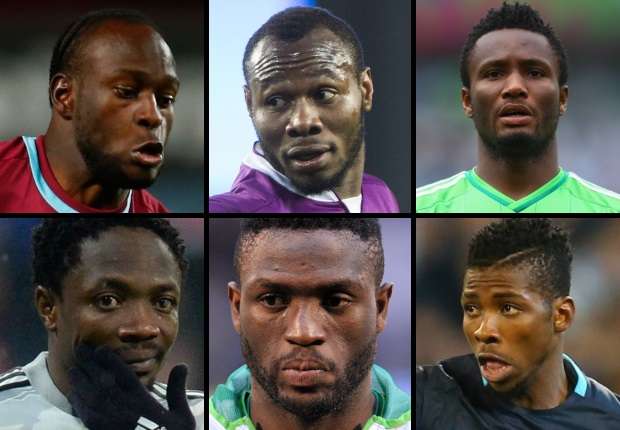
Fans of the national team continue to bemoan the absence of a true creative attacking midfielder, but isn't it time to accept their unavailability and seek alternative solutions?
Is it at all surprising that a nation which has always elevated individuals over systems in all walks of life should continue to hanker after a no.10?
As Nigeria toiled against Swaziland, the reactions often centred on a perceived lack of creativity within the team, as if a fairy godmother who with a wave of a wand could turn a midfield of Paul Onobi, Ogenyi Onazi and Sylvester Igbonu into something resembling ‘ La Carre Magique ’.
While the concept of ‘creativity’ is an abstract one, and the idea of any one player being designated to provide it is becoming quainter, it is clear that this problem – for it is one, but not in the manner most seem to understand – predates the regime of Sunday Oliseh as Super Eagles coach.
Nigeria started the opening game at the 2014 World Cup with Ramon Azeez, an energetic ball-winner and distributor, behind Emmanuel Emenike upfront. By the second game, Stephen Keshi deployed Babatunde Michael in that position and the Dnipro winger acquitted himself reasonably well. He continued in the role until Onazi broke his arm with a shot of primal fury against Argentina, upon which Victor Moses, another winger, had a go.
Babatunde would not pull on a Nigeria jersey competitively until June of this year, when Nigeria faced Chad in a 2017 Cup of Nations qualifier. He turned in a completely insipid display, and has not been recalled since.

Babatunde | Thus far unable to build on his showings in Brazil
This run of events highlight two interesting facts: first, and more obviously, the Super Eagles are strapped for options in the central attacking midfield position. Second, this is not necessarily a problem: the responsibilities of the position in modern football are evolving. It is interesting to note that Babatunde performed adequately against Bosnia, where a first-half goal allowed the Super Eagles to play on the counter for the rest of the game, as well as against Argentina, where a win was not required and Nigeria again played on the break.
These required him to function simply as a transition player, reducing the onus on incisive passing and sound decision-making. Against Chad, where the initiative needed to be seized against defensive opponents, his limitations were apparent.
So what is clear is that the demands of the position differ on the basis of match strategy as well as game-situation. The idea of that one player, ectoplasmic and elusive, with the ability to ‘unlock’ the opposing defence with a moment of sorcery, is not grounded in reality. For one thing, having a player in this capacity makes a team easier to defend against—shut down that individual, and neuter the entire team. Also, the spaces where these players would naturally inhabit are disappearing.

With more teams playing a double-pivot in front of the defence, there is often no space at all within which these sprites can wreak their havoc. It is no coincidence that those still considered pure no.10s in the modern game spend a significant amount of the game drifting out to the flanks: David Silva, Mesut Ozil, Kevin De Bruyne, to name a few.
So perhaps we are looking in the wrong place or, even worse, asking the wrong question. Rather than jam square pegs in round holes, as is now being done once again with Igbonu, it would be more profitable to look to alternatives.
John Obi Mikel, Kelechi Iheanacho, Ahmed Musa and even Nosa Igiebor may jump out as possible candidates for the No. 10 role, but are any really the solution?

Igbonu | Can he be the answer for Nigeria as a No. 10?
Oliseh cannot have failed to notice Barcelona’s ruthless evisceration of Real Madrid in El Clasico last weekend, the Catalonians set up in a 4-3-3. This left the No. 10 space open for occupation by, not just one, but multiple players at a time if necessary: Andres Iniesta slaloming forward, Sergi Roberto drifting inside from wide-right, Luis Suarez dropping deep. The combinations of these players between the lines unbalanced the Real backline time and again, and widened the gaps from an already flagging midfield.
Obviously, the point is not to advocate a move to that system, but rather to illustrate that there are options to explore. Igbonu’s hustle, all huff and puff, failed to inspire against Swaziland. We don’t make Kanus anymore; even if we did, the modern game is swiftly leaving that sort of player behind.
In the absence of the ideal, we owe it to ourselves to maximise the available.
Goal.Com
No comments:
Post a Comment